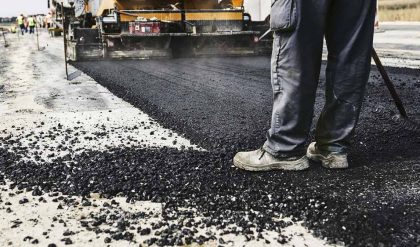Lube oil is extracted from crude oil, which undergoes a preliminary purification process (sedimentation) before it is pumped into fractionating towers. A typical high-efficiency fractionating tower, 25 to 35 feet (7.6 to 10.6 meters) in diameter and up to 400 feet (122 meters) tall, is constructed of high grade steels to resist the corrosive compounds present in crude oils; inside, it is fitted with an ascending series of condensate collecting trays. Within a tower, the thousands of hydrocarbons in crude oil are separated from each other by a process called fractional distillation. As the vapors rise up through the tower, the various fractions cool, condense, and return to liquid form at different rates determined by their respective boiling points (the lower the boiling point of the fraction, the higher it rises before condensing). Natural gas reaches its boiling point first, followed by gasoline, kerosene, fuel oil, lubricants, and tars.
Sedimentation
- 1 The crude oil is transported from the oil well to the refinery by pipeline or tanker ship. At the refinery, the oil undergoes sedimentation to remove any water and solid contaminants, such as sand and rock, that maybe suspended in it. During this process, the crude is pumped into large holding tanks, where the water and oil are allowed to separate and the contaminants settle out of the oil.
Fractionating
- 2 Next, the crude oil is heated to about 700 degrees Fahrenheit (371 degrees Celsius). At this temperature it breaks down into a mixture of hot vapor and liquid that is then pumped into the bottom of the first of two fractionating towers. Here, the hot hydrocarbon vapors float upward. As they cool, they condense and are collected in different trays installed at different levels in the tower. In this tower, normal atmospheric pressure is maintained continuously, and about 80 percent of the crude oil vaporizes.
- 3 The remaining 20 percent of the oil is then reheated and pumped into a second tower, wherein vacuum pressure lowers the residual oil’s boiling point so that it can be made to vaporize at a lower temperature. The heavier compounds with higher boiling points, such as tar and the inorganic compounds, remain behind for further processing.
Filtering and solvent extraction
- 4 After further processing to remove unwanted compounds, the lube oil that has been collected in the two fractionating towers is passed through several ultrafine filters, which remove remaining impurities. Aromatics, one such contaminant, contain six-carbon rings that would affect the lube oil’s viscosity if they weren’t removed in a process called solvent extraction. Solvent extraction is possible because aromatics are more soluble in the solvent than the lube oil fraction is. When the lube oil is treated with the solvent, the aromatics dissolve; later, after the solvent has been removed, the aromatics can be recovered from it.
Additives, inspection, and packaging
- 5 Finally, the oil is mixed with additives to give it the desired physical properties (such as the ability to withstand low temperatures). At this point, the lube oil is subjected to a variety of quality control tests that assess its viscosity, specific gravity, color, flash, and fire points. Oil that meets quality standards is then packaged for sale and distribution.
Quality Control
Most applications of lube oils require that they be nonresinous, pale-colored, odorless, and oxidation-resistant. Over a dozen physical and chemical tests are used to classify and determine the grade of lubricating oils. Common physical tests include measurements for viscosity, specific gravity, and color, while typical chemical tests include those for flash and fire points.
Of all the properties, viscosity, a lube oil’s resistance to flow at specific temperatures and pressures, is probably the single most important one. The application and operating temperature range are key factors in determining the proper viscosity for an oil. For example, if the oil is too viscous, it offers too much resistance to the metal parts moving against each other. On the other hand, if it not viscous enough, it will be squeezed out from between the mating surfaces and will not be able to lubricate them sufficiently. The Saybolt Standard Universal Viscometer is the standard instrument for determining viscosity of petroleum lubricants between 70 and 210 degrees Fahrenheit (21 and 99 degrees Celsius). Viscosity is measured in the Say bolt Universal second, which is the time in seconds required for 50 milliliters of oil to empty out of a Saybolt viscometer cup through a calibrated tube orifice at a given temperature.
The specific gravity of an oil depends on the refining method and the types of additives present, such as lead, which gives the lube oil the ability to resist extreme mating surface pressure and cold temperatures. The lube oil’s color indicates the uniformity of a particular grade or brand. The oil’s flash and fire points vary with the crude oil’s origin. The flash point is the temperature to which an oil has to be heated until sufficient flammable vapor is driven off so that it will flash when brought into contact with a flame. The fire point is the higher temperature at which the oil vapor will continue to burn when ignited.
Common engine oils are classified by viscosity and performance according to specifications established by the Society of Automotive Engineers (SAE). Performance factors include wear prevention, oil sludge deposit formation, and oil thickening.


Comments are closed.